By Robert Brueggeman
The major objective of the Washington State University (WSU) barley breeding program is the release of spring and winter malt barley varieties that are desired by the adjunct and craft malting, brewing, and distilling industries. To secure significant acreage, the most important goal is developing varieties selected by industry to make the American Malting Barley Association (AMBA) recommended barley variety list.
Industry demand and AMBA recommendations
Varieties that make the AMBA recommended list have been through rigorous testing that shows superior malt quality and/or agronomics across multiple environments and site years, as well as acceptance by the malting, brewing, or distilling industries in full scale evaluation. Thus, AMBA recommendation assures that only the best-performing modern varieties are selected.
Large malting facilities across the county, including Great Western Malting Company in Vancouver, Wash., exclusively contract and purchase AMBA recommended varieties. These industries contribute billions of added-value dollars to the U.S. economy, not to mention the important role they play in our U.S. social fabric. This year, the WSU breeding program submitted four promising spring malting lines to the AMBA testing program with plans to release one or more as varieties in the near future.
Challenges of environmental instability
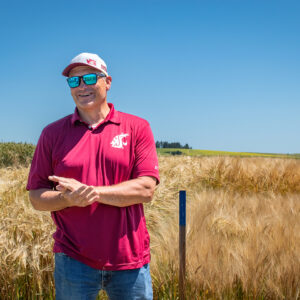
Bringing the genetic package together for over 12 genetically complex malt quality characteristics is becoming an increasingly difficult goal to achieve due to environmental instability across experimental site years.
Each year, we experience wide environmental swings such as drought, excessive precipitation, and heat waves to the point that it is difficult to know what a normal growing season looks like on the Palouse. Thus, breeding for resilience and broad adaptability is naturally built into the selection process across years as these extreme environmental factors have major effects on quality parameters.
Genetic innovations and breeding methods
Many malt quality traits show large genotype by environment interaction, which is the differences in the response a combination of genes have under different environmental conditions.
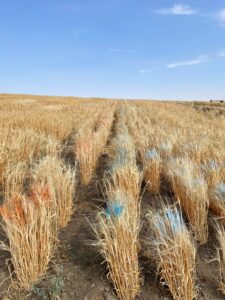
Four years ago, when I accepted the barley breeding position at WSU, I began by introgressing new sources of malt quality genetics into the traditional feed barley breeding program. Identifying winning genetic combinations from hundreds of new crosses required screening tens of thousands of offspring progeny from these crosses. The process involves identifying and scoring phenotypic variations in the offspring as a result of parental gene combinations that are better than either parent for multiple malt quality and agronomic traits.
Though this labor-intensive research has effectively introduced the needed malt quality into the program, the last few years of field data have shown that climate uncertainty presents complex challenges. We have found that the diverse sources of malt quality genetics have variable stability under a broad range of environmental conditions. Thus, developing malt barley varieties that can thrive in the face of climate uncertainty is no small task. It requires a multidisciplinary approach that combines traditional breeding methods with innovative genetic techniques to identify genetic combinations contributing to resilient and stable malt quality.
Prioritizing climate-resilient traits
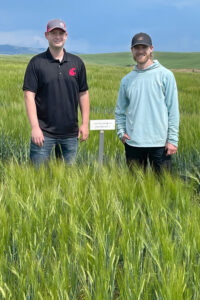
A primary strategy is to select for traits that enhance climate resilience. For example, we look for varieties that have improved heat tolerance and can withstand prolonged periods of high temperatures. High temperatures due to untimely heat domes lead to heat stress, affecting quality and yield depending on when the events occur in the barley growth stages. Additionally, we need to select for greater drought tolerance by selecting for wateruse efficiency as malting varieties will need to endure periods of water scarcity.
These traits help ensure that barley crops can continue to grow and develop quality malt even in the face of untimely heatwaves and low rainfall. If this can be achieved, growers can meet the quality standards to make malt grade barley and receive premium prices consistently, despite the highly variable growing conditions.
Advancements in genetic technologies and research have provided our team with powerful tools to expedite the development of climate-resilient varieties. The use of marker-assisted selection (MAS) and genomic selection allows us to identify and prioritize promising barley lines more efficiently. MAS enables breeders to identify specific genes, or markers, associated with desirable malt quality traits, including heat tolerance.
Genomic selection and holistic breeding
Another critical aspect of breeding for climate resilience is disease resistance. As the range and prevalence of barley diseases shift with changing climate conditions, breeders must continually monitor and adapt their strategies. This often involves identifying genetic markers associated with disease resistance and using them to guide breeding efforts.
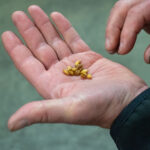
This targeted approach speeds up the WSU breeding process by allowing us to select progeny with the most promising genetic profiles. Genomic selection is also an important tool we are beginning to explore, which involves analyzing the entire genetic makeup of progeny coming down the breeding pipeline.
This comprehensive approach provides us with a more holistic view of each plant’s genetic potential and allows for the selection of individuals with a combination of traits that are well suited to climate uncertainty. Wide shifts in temperature and precipitation patterns present malt quality and yield challenges, and I believe broad adaptability can be achieved through understanding superior genetic combinations across the entire genome.
Opportunities amidst climate challenges
Although climate uncertainty brings real challenges to malt barley production in the Pacific Northwest (PNW), I think it will also bring opportunities for growers. Despite more frequent high temperatures and the accompanying heat stress effects on quality and yield, we have not seen the devastating events, such as drought, excessive precipitation, or Fusarium Head blight epidemics, that ravage entire malt barley crops in other production regions of the U.S. and the world.
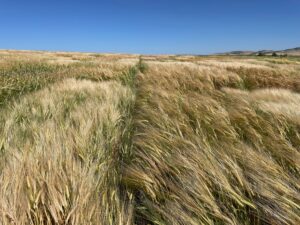
With stable barley varieties and adequate marketing, I am confident that Washington malt barley could be known as a superior product, like Washington wheat, and this could become a premier region for the nation’s malt barley production. As always, the breeders play a pivotal role by developing malting barley varieties that can withstand the challenges of climate uncertainty.
Washington state has been a hub for grain farming for generations, and feed barley held a special place in dryland rotations. However, as times change, the beer and spirit industry demand a significant share of the barley acreage.
Washington and the greater PNW could be poised to fill the need for quality malting barley for the U.S. and worldwide markets with broadly adapted and resilient varieties that produce high yields and quality malt under challenging environmental conditions.
This article originally appeared in the October 2023 issue of Wheat Life Magazine.

Robert Brueggeman, Ph.D.
Robert Brueggeman, Ph.D., holds the Robert A. Nilan Endowed Chair in Barley Research and Education at Washington State University. His breeding program focuses on the development of high-quality spring and winter malting barley varieties that are widely adapted to diverse regions of Washington State. Read more about Dr. Brueggeman.
